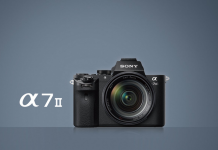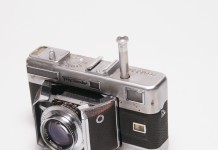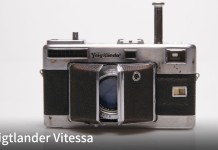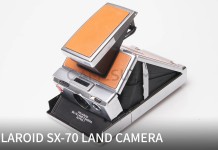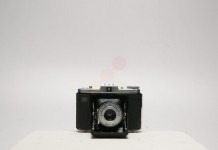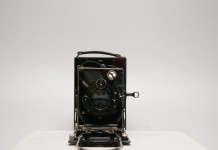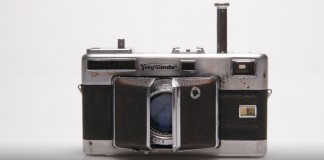(EN) Polaroid SX-70(한글) 폴라로이드 SX-70
Polaroid introduced world first consumer instant camera. The Land Camera Model 100 was the first camera to use instant film to quickly produce photographs with film package with automatic exposure control.
1Polaroid Forever
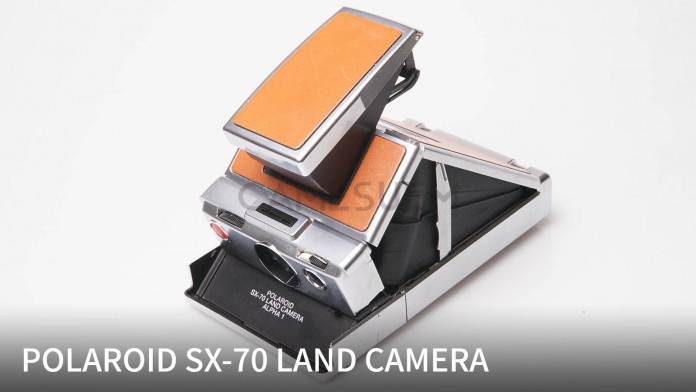
Polaroid became a generic trademark for instant camera.
People could not see their pictures till get its developed. However Polaroid gives novelty experience to its users. They can check their pictures right after took
I always remember the moments when my father gave me SX-70 as business trip gift.
The film was hard to find in early stage. Nonetheless, Polaroid’s SX-70 film was phased out of production in late 2005 to early 2006. Small quantities of the film may still be acquired, moreover it became more rare in the market.
Other brand still produce films for polaroid. Nevertheless, there are performance difference between polaroid produced film and others.
I encourage you all to use this camera when film may still be acquired.
Like, Ansel Adams, Andy Warhol, Helmut Newton, and Walker Evans who praised and used the SX-70 in those days other people were soon charmed.

Hnery Dreyfuss, industrial designer was designed Polaroid SX-70 with beautiful leather and metal parts including its unique functions.
Polaroid SX-70 often use as a prop in the movie. Because of its beauty and design.
When not in use it folds up in 45mm thickness of rectangular box. Further, it transfers to attractive triangular body when it in use. It became more and more famous for its unique design.
2History

In 1947, Polaroid introduced its first consumer camera. The Land Camera Model 95 was the first camera to use instant film to quickly produce photographs without developing them in a laboratory. The popular Model 95 and subsequent Land Cameras required complex procedures to take and produce good photographs.
Photographic paper had to be manually removed from cameras, peeled open after 60 seconds, needed several minutes to dry, and often left developing chemicals on hands.
Pictures from the SX-70, by contrast, ejected automatically and developed quickly without chemical residue. Polaroid founder Edwin Land announced the SX-70 at a company annual meeting in April 1972. On stage, he took out a folded SX-70 from his suit coat pocket and in ten seconds took five pictures, both actions impossible with previous Land Cameras.
The company first sold the SX-70 in Miami, Florida in late 1972, and began selling it nationally in fall 1973. Although the high cost of $180 for the camera and $6.90 for each film pack of ten pictures limited demand, Polaroid sold 700,000 by mid-1974. There were a variety of models beginning in 1972 with the original SX-70, though all shared the same basic design.
Dr. Land wanted to encourage photographers to think they were looking at the subject, rather than through a viewfinder. When many users complained that focusing was difficult, especially in dim light, a split-image rangefinder prism was added. This feature is standard on all later manual focus models.
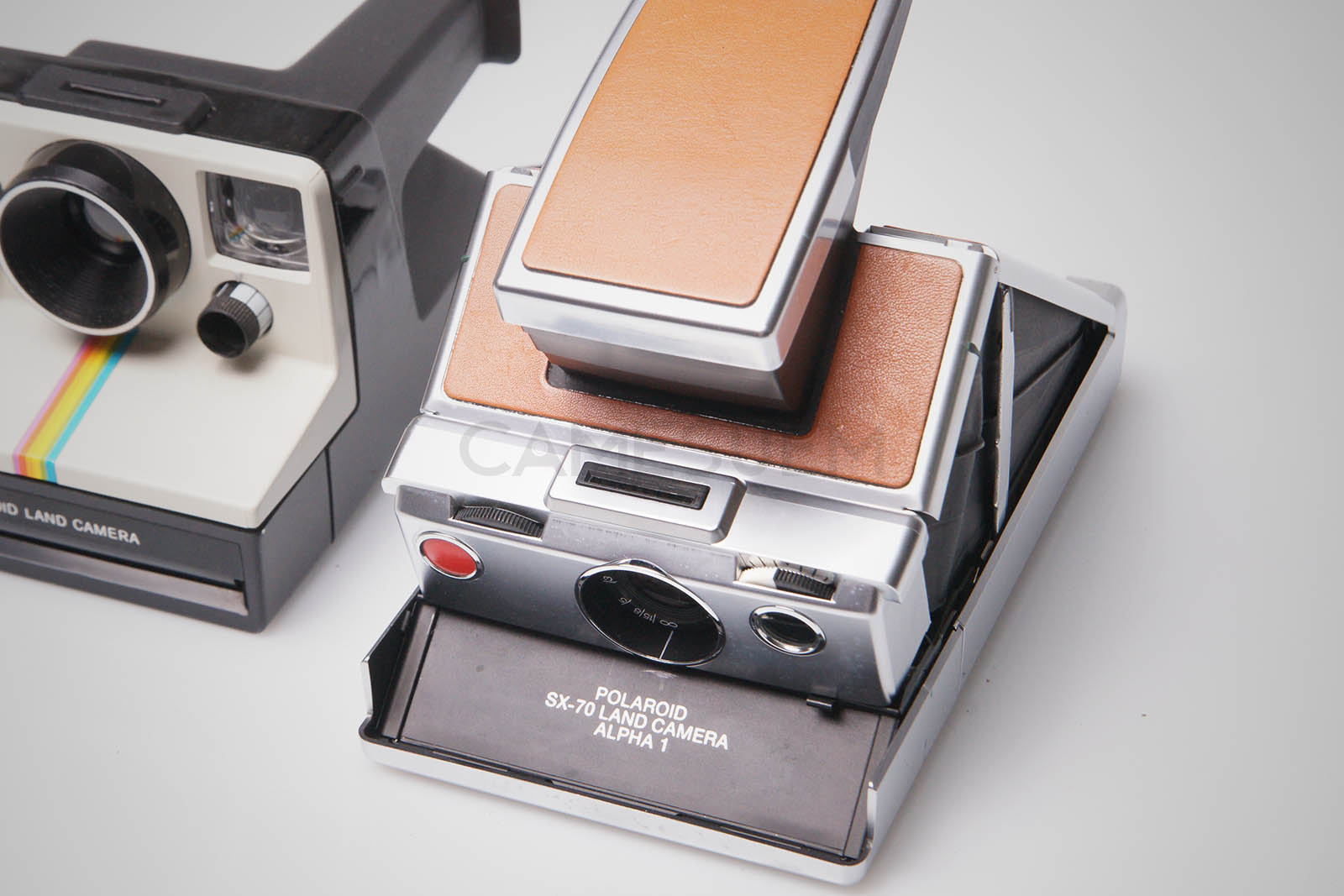
The later Sonar OneStep and SLR 680 models were equipped with a sonar autofocus system introduced in 1978. This sonar autofocus system greatly helped the user’s ability to focus the camera, especially in dark environments, and could be turned off if manual focus was needed.
The Sonar Onestep models were the first autofocus SLRs available to consumers. The later SLR 680/690 models updated the basic design of the Sonar Onestep to more modern standards by incorporating support for newer 600 film cartridges instead of SX-70 cartridges, and a built-in flash instead of the disposable Flashbar.
Though expensive, the SX-70 was popular in the 1970s and retains a cult following today. Eminent photographers such as Ansel Adams, Andy Warhol, Helmut Newton, and Walker Evans praised and used the SX-70. It became the most popular instant camera after many other models.
Not until the $40 Model 1000 OneStep using SX-70 film became the best-selling camera of the 1977 Christmas shopping season, however, did its technology become truly popular.
3Design Features

The SX-70 included many sophisticated design elements. A collapsible SLR required a complex light path for the viewfinder, with three mirrors of unusual including one Fresnel reflector, aspheric shapes set at odd angles to create an erect image on the film and an erect aerial image for the viewfinder. The body was made of glass-filled polysulfone, a rigid plastic which was plated with a thin layer of copper-nickel-chromium alloy to give a metallic appearance.
4Film History

Polaroid SX-70 film was introduced to the market in 1972, and was a market success despite some problems with the batteries on early film packs. The original SX-70 film was improved once in the mid-’70s and replaced in 1980 by the further advanced “SX-70 Time-Zero Supercolor” product, in which the layers in the film card were altered to allow a much faster development time (hence the “time zero”). It also had richer, brighter colors than the original 1972 product.
There were also professional market varieties of the SX-70 film including 778 (Time Zero equivalent) and the similar 708, Time Zero film without a battery
A feature of the SX-70 film packs was a built-in battery to power the camera motors and exposure control, ensuring that the battery would never be exhausted as long as film was in the camera. The “Polapulse” battery was configured as a 6 volt thin flat battery, and used zinc-chloride chemistry to provide for the high pulse demand of the camera motors.
In the 1980s, the company even produced small “600” AM/FM radios that would run on film packs in which the film cards had been exhausted.
5Film Issues
Polaroid’s SX-70 “Time-Zero” film was phased out of production in late 2005 to early 2006 differing according to regional markets. Small quantities of the film may still be acquired, however at often very highly inflated prices

